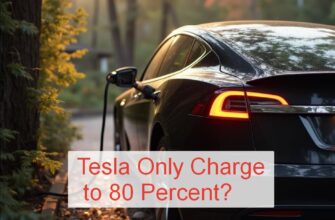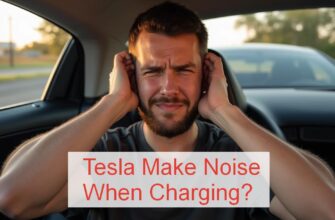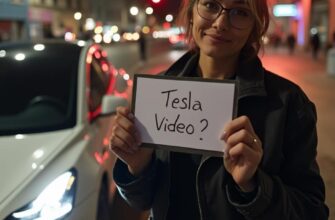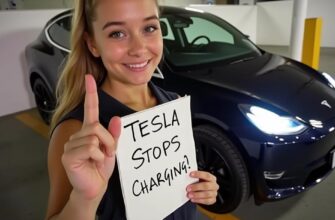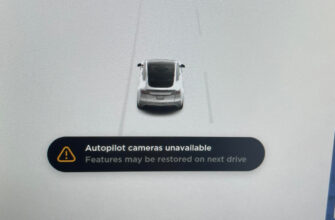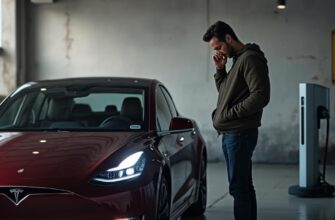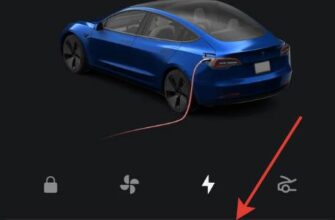You’ve parked your Tesla, locked it up, and walked away, assuming the battery is just sitting there, waiting for your next drive. But hours or days later, you glance at your Tesla app and notice the battery percentage has dropped a bit more than you expected. What’s going on? Is your Tesla secretly using power when it’s “off”? Yes, it is!
This phenomenon is often referred to as “vampire drain” or “phantom drain” – the normal battery consumption that occurs when an electric vehicle is parked, even when it’s not being driven or charged. Teslas, being highly connected and feature-rich computers on wheels, have several systems that contribute to this background power usage.
If you’re looking to maximize your Tesla’s range and minimize how much battery it uses while parked, understanding the causes of this drain and how to manage them is key. Let’s dive in!
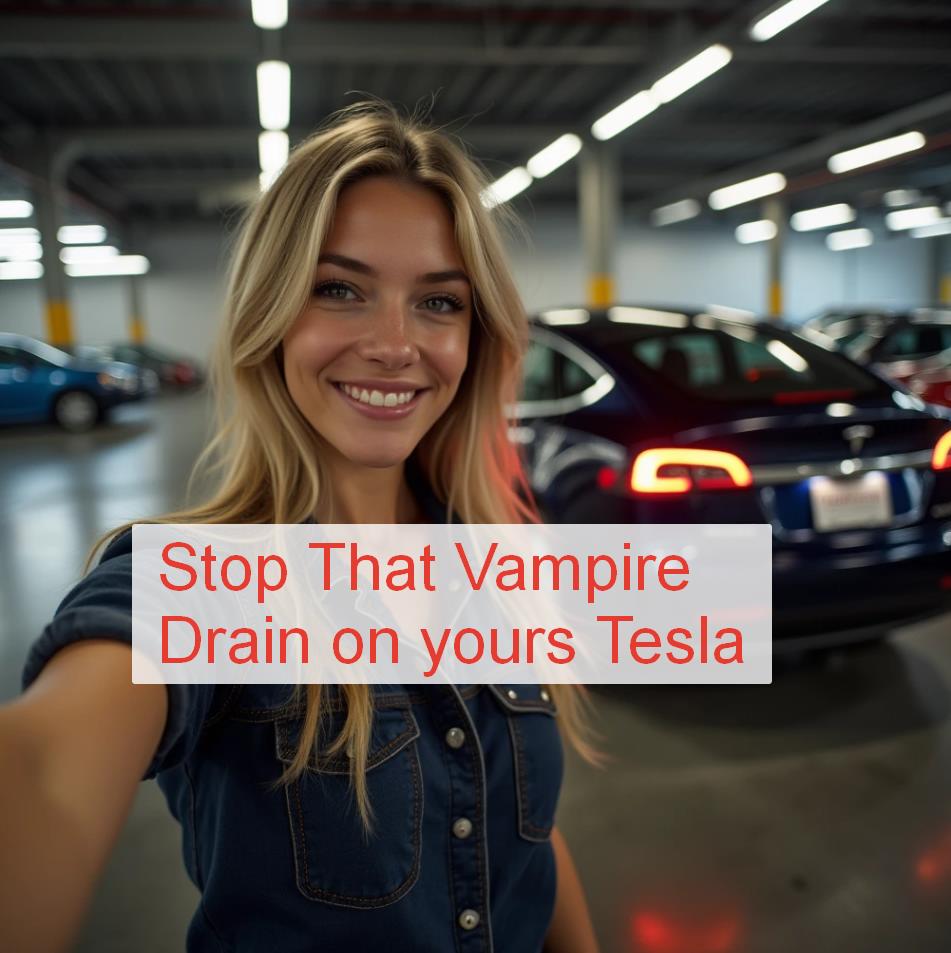
Understanding Vampire Drain: Why Your Tesla Still Uses Battery When Parked
Unlike a traditional gasoline car where pretty much everything shuts down when you turn the key off, your Tesla is always, in a sense, “on.” Its computers need to run background processes.
Always “Listening”
Even when parked and locked, your Tesla’s systems are doing things: maintaining battery health, checking for software updates, communicating with the Tesla app, monitoring surroundings, and being ready to “wake up” instantly when you approach. These background tasks require power, drawn directly from the main battery.
Top Culprits: What’s Draining Your Tesla’s Battery While Parked?
Several specific features and conditions contribute most significantly to vampire drain. Pinpointing these is the first step to saving battery.
1. Security & Monitoring Features
These provide peace of mind but come at a cost in battery percentage.
- Sentry Mode: This is one of the biggest drains! Sentry Mode keeps multiple cameras and sensors active around the vehicle to detect and record potential threats. It’s a fantastic security feature, but running those systems consumes a considerable amount of energy.
- Cabin Overheat Protection: This feature automatically turns on the climate control system to prevent the cabin from getting excessively hot when parked in direct sunlight. While great for protecting the interior and any occupants (like pets left briefly – use Dog Mode instead!), running the HVAC uses significant battery power.
2. Connectivity & Background Activity
How your car connects to the world and how you interact with it when parked makes a difference.
- Frequent App Access: Every time you open the Tesla app on your phone, the app “wakes up” your car to get the latest status (battery level, location, climate). Constantly checking the app prevents your car from entering a low-power “deep sleep” state. Problems with the app or connectivity, as discussed in articles like Why Is My Tesla App Not Working?, can potentially impact this communication and subsequent battery drain.
- Third-Party Apps/Services: Any third-party apps or services linked to your Tesla account (like some data logging apps) that frequently access your vehicle’s data can also keep the car awake and increase drain.
- Poor Signal Strength: If your car is parked in an area with poor cellular or Wi-Fi signal, it has to use more power trying to maintain a connection, which increases drain. Connectivity issues can sometimes manifest in other ways too, like the car displaying Why Does My Tesla Say Routing With No Traffic Data?, highlighting the importance of a stable connection.
3. Climate & Battery Management
The car actively manages the battery’s temperature for health and longevity.
- Battery Conditioning: In very hot or very cold temperatures, the car will use energy to heat or cool the battery pack to keep it within an optimal temperature range. This is crucial for battery health and performance but consumes a significant amount of power, especially in extreme climates when parked for long periods.
- Scheduled Charging/Departure: If you have a scheduled departure time set, the car might start warming the battery and cabin before that time, using battery energy if not plugged in.
- Cabin Keep Climate On / Pet Mode / Camp Mode: If you intentionally leave the climate control on for occupants or pets, this is a direct and significant drain.
“I was losing like 5-6% battery overnight in my garage! Didn’t realize Sentry Mode used that much power. Turned it off at home, and now it barely loses 1%. Huge difference.” – Chris P., Reduced the Drain
4. Other Factors
- Software Updates: When a new software update is available, the car downloads it and prepares for installation in the background, which requires power.
- Summon Standby: If you have Summon Standby enabled, the vehicle keeps certain systems awake and ready, increasing background power usage.
How To Minimize Tesla Battery Drain When Parked (Your Action Plan)
Ready to fight vampire drain? Here are the most effective strategies you can implement:
- Adjust Sentry Mode Settings:
- Turn Sentry Mode OFF when parked in safe locations like your home garage (Controls > Safety > Sentry Mode).
- Use the “Exclude Home” or “Exclude Favorites” options to automatically disable Sentry Mode in trusted locations.
- Configure Cabin Overheat Protection:
- If safe to do so (no pets or people left in the car), set Cabin Overheat Protection to “Fan Only” or “OFF” in hot weather (Controls > Safety > Cabin Overheat Protection). Fan Only uses much less power than running the AC.
- Limit Frequent App Checking: Resist the urge to constantly open the Tesla app just to check the status. Check it when you actually need information or plan to use a feature.
- Disable Summon Standby: If you don’t frequently use the Summon feature, turn off Summon Standby (Controls > Autopilot > Customize Summon > Standby Mode > OFF).
- Ensure Car Enters Deep Sleep: Make sure all doors, frunk, and trunk are fully closed. Ensure the touchscreen turns off after you leave. The car will naturally enter a lower power state if left undisturbed.
- Review Third-Party App Access: If you use apps that connect to your Tesla account, review their permissions and consider disabling access if you suspect they are preventing your car from sleeping. General issues with connectivity can sometimes lead to troubleshooting needed for other apps, as seen with Troubleshooting When Ford Pass Can’t Locate Your Vehicle.
- Park in Garages or Shade: Parking indoors or in a shaded spot reduces the need for the car to use energy for battery conditioning in extreme temperatures.
- Maintain Strong Connectivity: If possible, park your Tesla where it has a good Wi-Fi signal. This can allow it to download updates efficiently and reduce cellular usage.
- Utilize Scheduled Charging: If leaving your car parked for a long time in extreme temperatures, leave it plugged in with Scheduled Charging or Scheduled Departure set. The car will use grid power for battery conditioning instead of draining the main battery.
“I stopped checking my app every hour and turned off Sentry when in my garage. Went from losing 4% a day to maybe 1%. Such an easy way to save range!” – David M., Mastering His Tesla
Frequently Asked Questions (FAQ)
Q: What is a “normal” amount of vampire drain for a Tesla?
A: A typical vampire drain for a Tesla with minimal features active (Sentry Off, Overheat Protection Off/Fan Only) is usually between 1-4% per day. However, this can vary significantly based on ambient temperature (due to battery conditioning), cellular signal strength, and background activity.
Q: Does Sentry Mode use a lot of battery?
A: Yes, Sentry Mode is one of the most significant contributors to vampire drain. It can consume up to 1% or more every few hours, especially in areas with frequent detections that trigger recordings.
Q: Does checking the Tesla app drain the battery?
A: Yes. Each time the app connects to retrieve real-time data, it “wakes up” certain systems in the car that would otherwise be in a lower power state. While a single check isn’t a major drain, frequent checking throughout the day adds up.
Q: Does extreme weather (hot or cold) increase battery drain when parked?
A: Yes. The car uses significant energy to heat (in the cold) or cool (in the heat) the high-voltage battery pack to maintain its optimal temperature, which increases drain when parked in extreme climates, even if you’re not driving.
Q: Should I leave my Tesla plugged in when parked for long periods?
A: Yes, this is highly recommended, especially in areas with extreme temperatures. When plugged in, the car will use power from the grid for battery conditioning and other background tasks instead of draining the main battery, significantly reducing vampire drain.
Conclusion
While vampire drain is a natural part of owning a connected electric vehicle like a Tesla, it doesn’t mean you’re powerless to reduce it! Features like Sentry Mode and Cabin Overheat Protection, along with frequent app use and battery conditioning in extreme temperatures, are the main culprits. By intelligently managing your vehicle settings and being mindful of how you interact with the car when parked, you can significantly minimize battery drain and ensure you have more range available for driving when you need it. Take control of your Tesla’s parked battery life!

